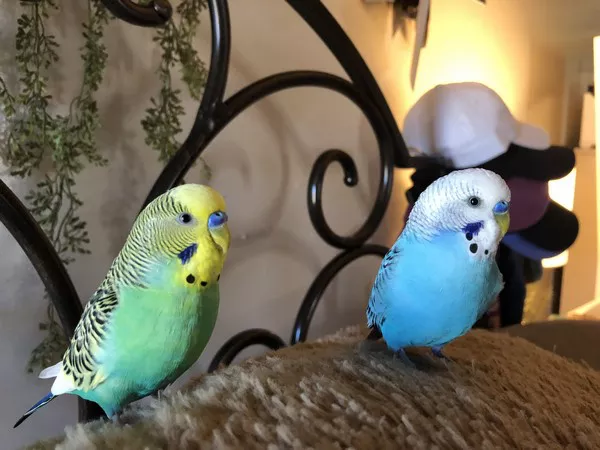Rabbits, cherished for their adorable demeanor and gentle nature, are not exempt from health challenges. When a rabbit faces difficulty in consuming food through conventional means, syringe feeding becomes a crucial aspect of their care. This article aims to provide a comprehensive guide for pet owners on the nuances of syringe feeding a difficult rabbit, addressing both the physical and emotional aspects of the process.
Understanding the Need for Syringe Feeding:
Before delving into the specifics of syringe feeding, it is essential to grasp why a rabbit may require this intervention. A variety of health issues can contribute to a rabbit’s reluctance or inability to eat independently. Dental problems, gastrointestinal stasis, and illnesses that cause loss of appetite are common culprits. Syringe feeding becomes a lifeline in such situations, ensuring that the rabbit receives the necessary nutrition to aid in recovery.
Assessing the Situation: Recognizing the Signs of Difficulty
The first step in syringe feeding a difficult rabbit is recognizing the signs that indicate the need for intervention. Observing changes in behavior, weight loss, or a sudden aversion to food are key indicators. Regular health check-ups with a veterinarian are crucial in identifying potential issues early on. Once the need for syringe feeding is established, it’s time to prepare both physically and mentally for the task at hand.
Gathering Essential Supplies: A Prerequisite for Success
Syringe feeding requires specific tools to ensure both the rabbit’s safety and the effectiveness of the process. The following supplies are essential:
Syringes: Choose a syringe with a small tip to allow for precise feeding. Ensure that the syringe is clean and free of any residue from previous use.
Critical Care Formula: This specially formulated powder can be mixed with water to create a nutrient-rich solution suitable for syringe feeding. It typically contains essential vitamins and minerals to support the rabbit’s health.
Towels or Blankets: Creating a comfortable and secure environment is crucial. Use towels or blankets to wrap the rabbit gently, providing stability during the feeding process.
Feeding Needle or Catheter Tip: Select a feeding needle or catheter tip that fits securely onto the syringe, allowing for smooth administration of the critical care formula.
Pet-Safe Hand Gel or Gloves: Maintain hygiene by using pet-safe hand gel or gloves to ensure cleanliness during the feeding process.
Preparing the Rabbit: Calmness is Key
Approaching a difficult rabbit for syringe feeding requires patience and a calm demeanor. Rabbits are sensitive animals, and any signs of stress can impede the process. Follow these steps to prepare the rabbit for syringe feeding:
Create a Quiet Environment: Choose a quiet, well-lit space free from distractions. Minimize loud noises and sudden movements to keep the rabbit at ease.
Use a Towel or Blanket: Gently wrap the rabbit in a towel or blanket, leaving the head exposed. This provides a sense of security and helps in keeping the rabbit still during the feeding process.
Familiarize the Rabbit with the Syringe: Allow the rabbit to sniff and inspect the syringe without administering any food. This helps in reducing anxiety and associating the syringe with a non-threatening object.
Mastering the Syringe Feeding Technique: Step-by-Step Process
Once the rabbit is prepared and the necessary supplies are gathered, it’s time to master the syringe feeding technique. Follow these step-by-step instructions for a smooth and effective feeding process:
Prepare the Critical Care Formula: Follow the instructions on the critical care formula packaging to create a solution with the appropriate concentration. Ensure that it is lukewarm to avoid discomfort for the rabbit.
Draw the Solution into the Syringe: Using the appropriate syringe, draw the critical care solution into the syringe. Remove any air bubbles to prevent accidental ingestion by the rabbit.
Position the Rabbit: Hold the rabbit securely, ensuring that it is comfortable and unable to struggle free. The wrapped towel or blanket should provide ample support.
Administer the Critical Care Formula: Insert the feeding needle or catheter tip into the rabbit’s mouth, aiming for the side of the mouth to avoid the front teeth. Administer the solution slowly and steadily, allowing the rabbit to swallow between each syringe-full.
Monitor the Rabbit’s Response: Observe the rabbit’s reaction throughout the feeding process. If signs of distress or choking occur, pause and allow the rabbit to recover before continuing.
Repeat as Directed by the Veterinarian: The frequency and amount of syringe feeding will depend on the veterinarian’s recommendations. It is crucial to follow their instructions diligently to ensure the rabbit receives adequate nutrition.
Addressing Potential Challenges: Troubleshooting Tips
Syringe feeding a difficult rabbit may pose challenges, and being prepared to troubleshoot common issues is essential. Consider the following tips to address potential hurdles:
Difficulty Swallowing: If the rabbit struggles to swallow, ensure that the critical care solution is not too thick. Adjust the concentration as needed and administer smaller amounts at a time.
Refusal to Eat: Some rabbits may refuse to eat initially. Experiment with different flavors of critical care formula or try warming it slightly to make it more palatable.
Stress and Anxiety: If the rabbit becomes stressed or anxious during syringe feeding, take breaks between administrations. Provide positive reinforcement, such as gentle strokes or calming words, to ease the rabbit’s anxiety.
Dehydration: In cases where the rabbit is dehydrated, consult with the veterinarian to determine if additional fluids are necessary. Hydration is crucial for the overall well-being of the rabbit.
Monitoring Progress and Adjusting the Feeding Plan
Regular monitoring of the rabbit’s progress is vital to assess the effectiveness of syringe feeding. Keep track of the rabbit’s weight, behavior, and overall health. Communicate regularly with the veterinarian to discuss any concerns or modifications needed in the feeding plan. Adjustments may be necessary based on the rabbit’s response to syringe feeding and the underlying health condition.
See Also:What Are Best Adult Rabbit Food?
Emotional Support for the Rabbit: Building Trust and Bonding
Beyond the physical aspect of syringe feeding, it is equally important to provide emotional support for the rabbit. Building trust and bonding during this challenging time can positively impact the rabbit’s well-being. Consider the following strategies:
Create a Positive Environment: Ensure that the feeding area remains a positive space for the rabbit. Offer treats or gentle petting before and after syringe feeding sessions.
Establish a Routine: Establishing a consistent feeding routine helps the rabbit anticipate and adapt to the syringe feeding process. Predictability can reduce stress and anxiety.
Use Positive Reinforcement: Reward the rabbit with praise and treats for cooperating during syringe feeding. Positive reinforcement creates a positive association with the process.
Monitor for Signs of Distress: Pay attention to the rabbit’s body language and vocalizations. If signs of distress persist, consult with the veterinarian to explore additional stress-relief strategies.
Conclusion: Nurturing the Well-being of a Difficult Rabbit
Syringe feeding a difficult rabbit requires a combination of technical skill, patience, and empathy. By understanding the signs of difficulty, preparing the necessary supplies, mastering the syringe feeding technique, and addressing potential challenges, pet owners can play a crucial role in their rabbit’s recovery. Moreover, the emotional support provided during this process contributes significantly to the overall well-being and happiness of the rabbit. As caregivers, it is our responsibility to approach syringe feeding with diligence, compassion, and a commitment to nurturing the health of our beloved furry companions.
Related Topics:
All You Need To Know About Nature Crest Rabbit Feed
Is Dog Food Good for Rabbits?
How To Homemade Timothy Hay Cubes for Rabbits?
























